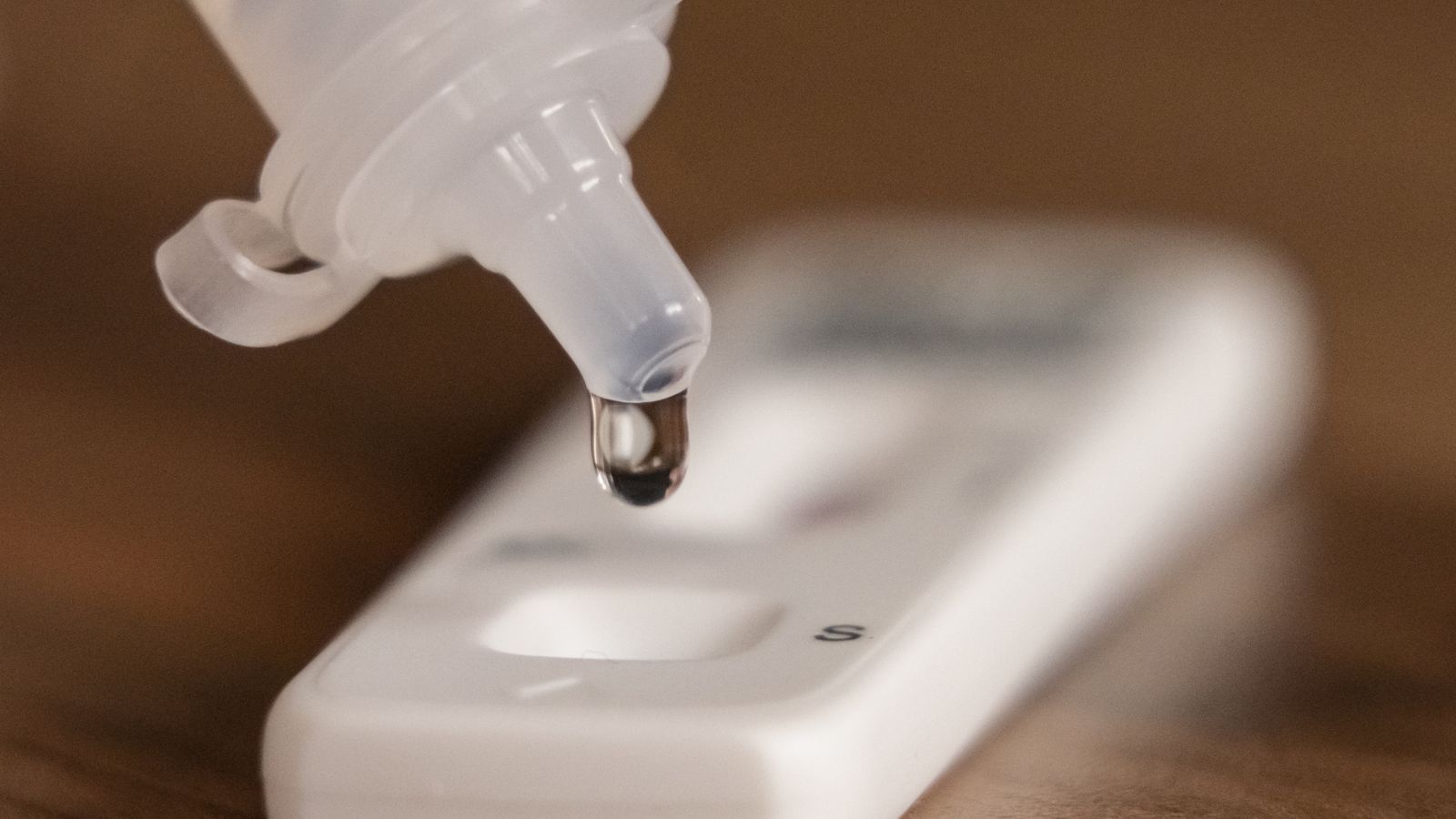COVID cases in England and Wales have risen for the first time in two months – marking an end to a steady fall since early July.
The increase means the total number of infections in the UK has also gone up, but levels are estimated to have fallen in Scotland and Northern Ireland.
About 927,900 people in private households across the country are likely to have tested positive for coronavirus in the week ending 14 September, according to the Office for National Statistics (ONS).
That is up 5% from 881,200 for the week before.
Infections across the UK had been steadily falling since early July, when the total hit 3.8 million at the peak of the wave caused by the Omicron BA.4 and BA.5 subvariants of the virus.
The number of people in hospital with COVID has also shown early signs of a rise.
However, deputy director for the ONS COVID infection survey Sarah Crofts has warned it is “too early” to see if the trends will continue.
Japan to ease COVID border restrictions for foreign travellers
Canada dropping COVID vaccine entry rule for foreign travellers – report
COVID-19: President Joe Biden says America is through the worst, insisting ‘the pandemic is over’
“We will monitor the data closely to see any impact of the return of schools over the coming weeks,” she said.
Where have cases increased and decreased?
In England, the percentage of people testing positive was 766,500, or about one in 70 – up from 705,800, or one in 75 the week before.
Infections are estimated to have risen in northeast England, London, the West Midlands and Yorkshire and The Humber, while falling in southeast England.
Subscribe to the Daily podcast on Apple Podcasts, Google Podcasts, Spotify, Spreaker
Wales has also seen a rise, where the latest estimate for infections is 39,700, or one in 75 people, up from 28,200, or one in 110.
In Scotland, 98,800 people were likely to have had COVID-19 in the latest survey, or about one in 55 – down from 113,500 or one in 45.
In Northern Ireland the estimate is 22,900, or one in 80 people, down from 33,700, or one in 55.
Please use Chrome browser for a more accessible video player
Which age groups are most affected?
Among age groups in England, the percentage of people contracting coronavirus is estimated to have increased for children in Year 7 to Year 11, and for 25-34 year olds.
In all other groups, the trend was again described as uncertain.
However, rates were lowest among children between the age of two and 11.
Read more:
End of pandemic ‘in sight’
Can you get a booster jab?
‘Next generation’ vaccine
The highest number of infections have been seen among 50 to 69-year-olds.
A fresh booster dose of vaccine is currently available to anyone aged 65 and over, providing they had their last jab at least three months ago.
Doses are also available to frontline health and care workers, pregnant women and people with a weakened immune system.
A booster will eventually be offered to everyone aged 50 and over this autumn.







